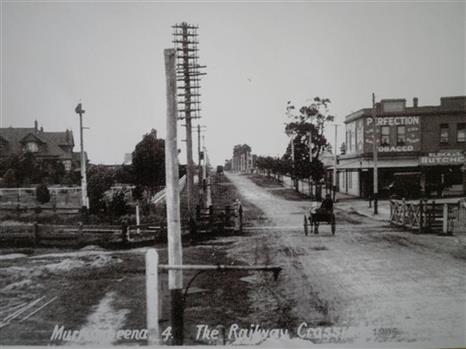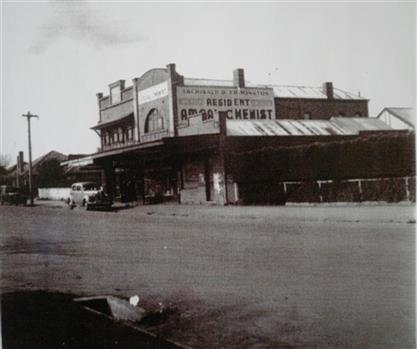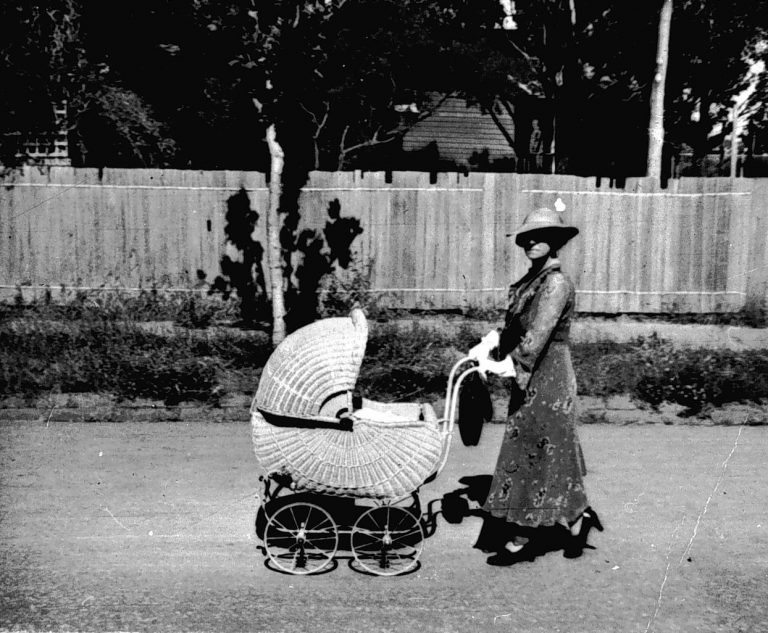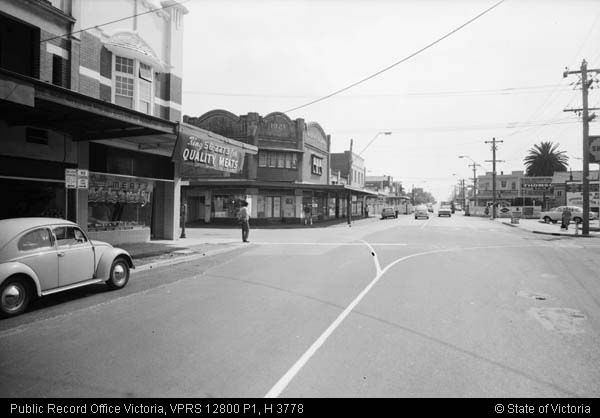History of Murrumbeena Village
Murrumbeena does not have a chequered past. Instead, its history reflects the calm and welcoming sense of community felt in the suburb today. It’s thought the name “Murrumbeena” is derived from the Aboriginal word “mirambeena”. There’s speculation that the word could have several meanings: “land of frogs”, “moss growing on decayed wood”, or it may be a derivative from the name of an Aboriginal elder. Another source claims it as the native word for “you”. Regardless of the etymology, the name was officially adopted when the railway station opened on the 8th October 1877.
Boon Wurrung Land
The traditional custodians of the land we now call Murrumbeena was a part of the Kulin Nation, and inhabited by the Boon Wurrung people.
It is believed that before European occupation, most of Boon Wurrung land was divided among six major clans. The Ngaruk-willam clan estate stretched from Gardiners Creek to near Dandenong, and included present-day Brighton and Mordialloc.
Early Australia
When the Railway Station first opened, Murrumbeena was occupied by serviced dairy farms and market gardens. Twelve years later, in 1889, Murrumbeena was only lightly settled and was home to a Church of Christ in Neerim Road along with a fruiterer, butcher, newsagent, grocer and boot maker. And soon after, the first Post Office opened in 1890, which is when lovebirds, Margaret and Arthur Tuckett, acquired a large parcel of land east of the railway station. They set about establishing a remarkable garden of exotic and native plants, and in 1905, Margaret published the highly-celebrated Year in my Garden.
By 1910, the town had gradually grown and was more densely settled. It wasn’t until after World War I that many of Murrumbeena’s houses were built. Even though the 1930s were marked by the Great Depression, a Catholic primary school was established in 1931, and a few years later Albert Victor Jennings built the Beauville housing estate. The Beauville was one of AV Jennings’ first housing estates and the company later became Australia’s largest private home builder and most influential provider of house and land packages.
Modern Day
It wasn’t until October 1960, when Chadstone Shopping Centre opened a mere 4km from Murrumbeena, that the main shopping strip in Murrumbeena felt the pinch. Today, Murrumbeena Village is having a resurgence. After some much-needed TLC and a whole lot of effort from our committed retailers, Murrumbeena Village is enjoying a second zest for life and offers residents a much welcome alternative to the super centre that has dominated the retail space for many years.




Famous Murrumbeenans
We like to think that everybody who takes up residence in Murrumbeena has something special to contribute to our wonderful community. There are, however, several people from our community who have had a great impact throughout Victoria and Australia – and indeed have had international fame and acclaim.
Arthur Boyd (1920 – 1999) Arthur was one of Australia’s leading painters of the late 20th Century. Boyd’s work had broad appeal and ranged from impressionist interpretations of Australian landscape to expressionist figuration. Boyd expressed his strong social conscience through his work, which highlighted humanitarian issues and the universal themes of love, loss and shame.
Merric Boyd (1888 – 1959) Merric was an Australian artist who was a skilled ceramicist, painter and sculptor. He was given the great honour of being coined as the father of Studio Pottery in Australia. He set up a studio in Murrumbeena in which he crafted Art Nouveau ceramics.
Mark Trevorrow (1959), Born and raised in Murrumbeena, Mark is a comedian, television host and media personality. Arguably most famous for his creation of the character Bob Down, “the Prince of Polyester” – A camp, safari suit wearing lounge singer with dazzling teeth and the host of a fictional regional daytime TV show.
Nick Cave (1957) Cave spent his youth in Murrumbeena. This Australian musician, singer-songwriter, author, screenwriter, composer and actor has enjoyed international acclaim and has been celebrated as the front man of the band, Nick Cave and the Bad Seeds.
Phillip Tracey (1958) Phillip was raised in Murrumbeena and went on to represent Australia at the 1984 New York Mandeville Paralympics, the 1988 Seoul Games and the 1992 Barcelona Paralympics.
Vance Joy (1987) Singer-songwriter James Gabriel Keogh, known professionally as Vance Joy, grew up in Murrumbeena and attended St Patrick’s primary school. His hit single “Riptide” was voted number 1 on the 2013 Triple J Hottest 100.
Alternative rock band, TISM, played their first show at the Murrumbeena athletics track club rooms. The seven-piece band from Melbourne formed on the 30th December 1982 and enjoyed a large underground/independent following.
It may come as no surprise that a great many Australian Rules footballers, including Robert Flower, Tom Flower, Ray Carr, Mark Mitchell, Howard Hollow and Ken Jungworth, have a strong connection to Murrumbeena. They either attended one of Murrumbeena’s schools, or played with Murrumbeena Football Club.
Member for Maribyrnong in the Australian Parliament and Leader of the Australian Labor Party and Leader of the Opposition in the Australian House of Representatives, Bill Shorten grew up on Neerim Road, Murrumbeena.
The Boyds
Murrumbeena is considered to have a culturally-rich history with a strong link to the arts. This is largely due to the artistic dynasty of the Boyd family and their strong and lasting presence in the community.
This history began with Arthur Merric Boyd and Emma Minnie à Beckett, who married in 1886. Both artists themselves, they encouraged their four children to pursue creative endeavours as well. In 1913 they bought their son Merric a small plot of land, which would later become known as Open Country, a place where Merric could practise pottery and where his family and friends came to live. This was located on Wahroonga Crescent in Murrumbeena, and would become known as a haven for artists and refugees, and a place for philosophical discourse.
Merric’s wife Doris Gough was also an artist and their children Lucy, Arthur, Guy, David and Mary all went into the arts following creative childhoods. When Merric’s son Arthur was conscripted into the military and served in the Cartographic Unit, he met another young artist in John Perceval, who later settled at Open Country. He and Arthur’s sister Mary married in 1944.
John Perceval and Arthur Boyd were both part of the Heide Circle and Angry Penguins, along with their close friends John and Sunday Reed, Sidney Nolan (whom Mary Boyd married in 1978), Albert Tucker and Joy Hester—but Arthur felt a much stronger pull toward Murrumbeena and his family.
Today the dynasty of the Boyds continues on around the country. The siblings of Merric boyd pursued artistic careers and so did many of their children. The Boyds that spent their days at Open Country in Murrumbeena—Lucy, Arthur, Guy, David and Mary Boyd—each are survived by children that became painters, potters, designers, musicians and writers.










